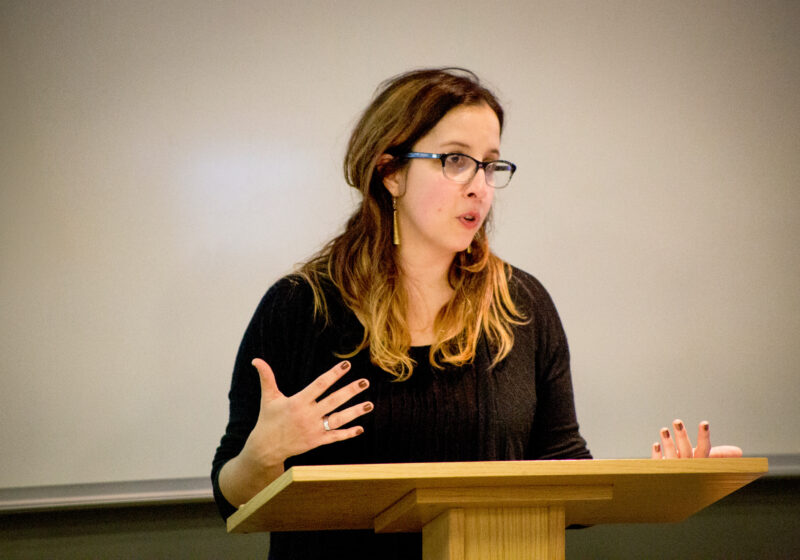Don Quixote turns 400 years old this year, and the anniversary of the first part of the novel by Miguel de Cervantes is being celebrated on campus this week with a round table discussion, film screening and exhibit in the Department of Rare Books and Special Collections.
“The [worldwide] celebration reflects widespread interest in and appreciation for the book,” Associate Professor of Spanish Ryan Prendergast said. “It’s not just about the book anymore – it’s about an icon, an image that comes off the pages.”
Spain and the rest of the world have been honoring the famous knight-errant’s adventures through conferences and festivals.
“For Spain, it’s a very significant event because Cervantes has come to be known as their prized author – Cervantes is the Shakespeare of Spain,” Prendergast said.
The idea of an on-campus celebration began last spring with the acquisition of rare versions of the book through funding from the Friends of the University of Rochester Libraries.
“I bought six different editions of ‘Don Quixote’ in the last year,” Rare Books and Special Collections Curator Pablo Alvarez said. “Nowadays it is easy to locate the books by using Internet. The difficulty is in the research involved to target the right edition in the right condition.”
Titled “Illustrating Cervantes,” the exhibit will be on display through tomorrow. Featured in the exhibit is Rush Rhees October Book of the Month, a 1738 first edition in Spanish published in England, illustrated with 69 copperplate engravings, including the first portrait of Cervantes.
Prendergast, Alvarez and Modern Languages and Cultures librarian Barbara Alvaraz planned the events around Prendergast’s English-taught literature course “Don Quixote: The Book, The Myth, The Image.”
“It’s important to continue to expose students to early modern literature and appreciation for the book as an artifact, viewed for the text itself,” he said.
Tuesday’s events showcased illustrations inspired by the book. During his talk “Illustrating Cervantes: The Eighteenth Century Interpretation of Don Quixote,” Alvarez showed slides of popular early illustrations and discussed their importance in the past, as well as today.
“I endorse the view of scholars who place the book as a physical artifact as how the community of readers interpret a work at a particular time,” he said.
Alvarez reminded the audience that Cervantes did not illustrate his text.
“The first illustrations came after the author’s death,” Alvarez said. “A writer had no say with the printer.”
University of Calgary Associate Professor Rachel Schmidt discussed the ways French images of Spain influenced Spanish national identity, Tuesday evening.
Prendergast is thrilled with the week thus far.
“It’s not often that you see an event with such a range of people on campus – students, Friends of the Library, faculty and staff,” he said. “I’m pleased the Friends saw how their money was being used – that the materials were being used by students.”
Today’s round table discussion hosts professor of Spanish emeritus Robert ter Horst, professor of English John Michael, professor of history Richard Kaeuper and graduate student of English Andrew Wadoski.
Prendergast will moderate. “The idea is to expose students to views from outside Hispanic studies,” he said.
The week culminates in a showing of Grigori Kozintsev’s “Don Quixote” at 7 p.m. in the Rare Books Library. The 1957 Russian film is said to be the best adaptation of the novel, according to Prendergast, who has already started thinking about the anniversary of the release of the second part in 1615.
“It’s a long way off, but it will be interesting to see what we can do,” he said.
Borchardt can be reached at jborchardt@campustimes.org.




